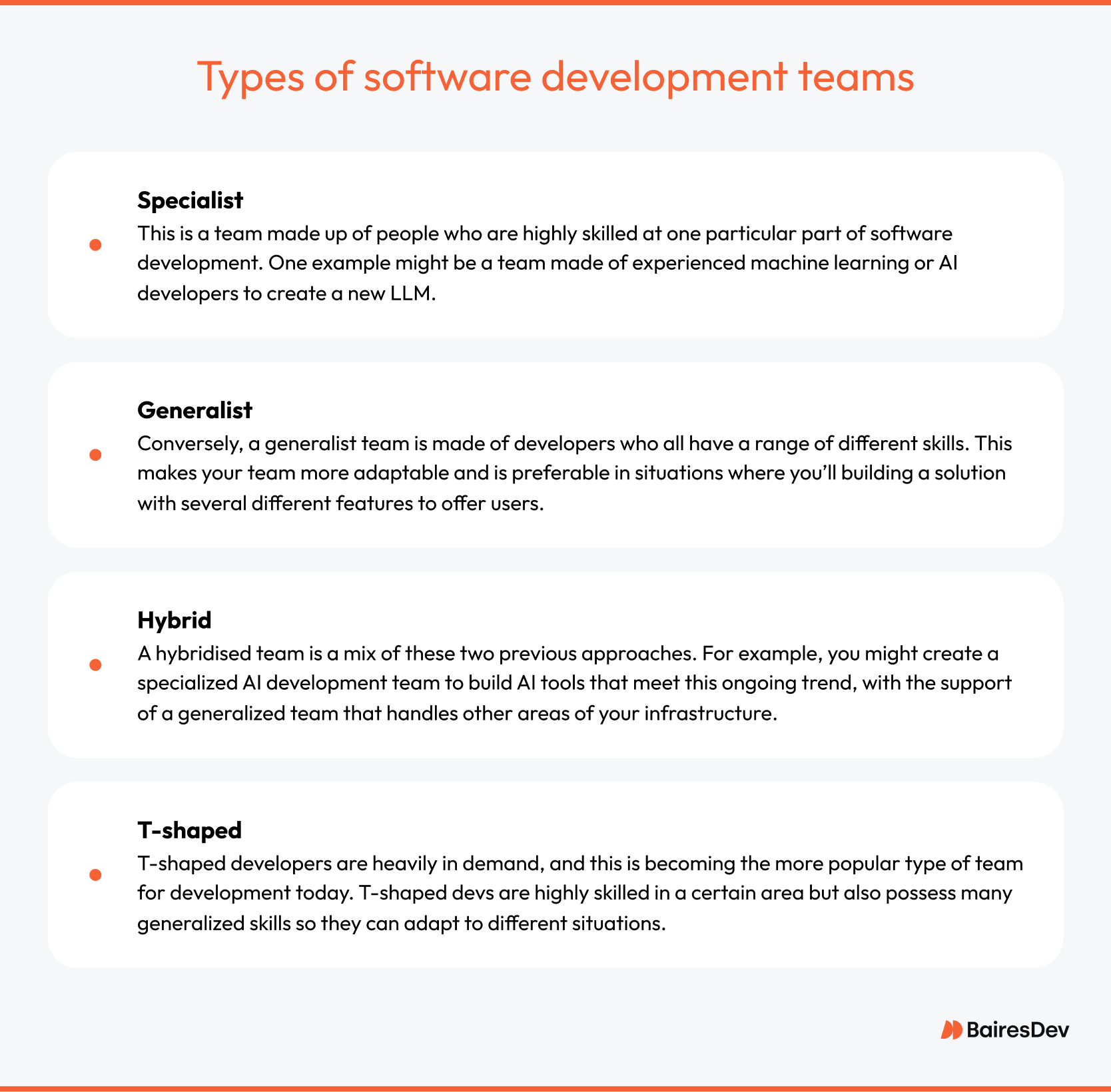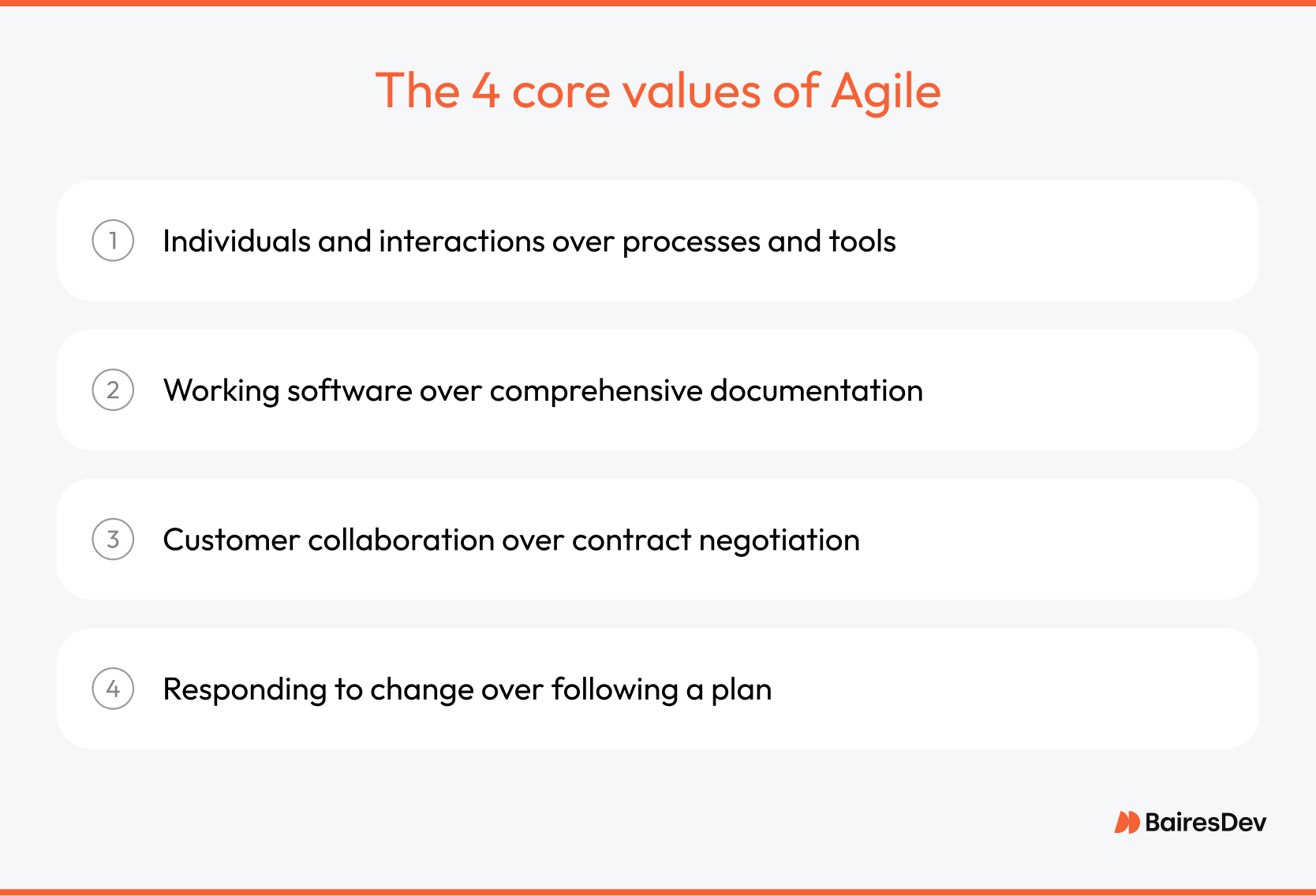Managing software development teams effectively represents a constant challenge for development team leaders, as well as tech executives and product owners. With the continued demands for delivering scalable and reliable solutions across all areas of the industry, understanding how to optimize and refine the development process can be a key factor in the difference between success and failure for companies of all sizes.
Development teams today should be striving for predictable product velocity. To help your software engineering team achieve it, we’ll first outline what exactly product velocity means, and why it’s the ideal end goal. We’ll then detail how you can build an efficient software development team from the ground up, with considerations for structure, recruitment, responsibilities, methodologies, collaboration and constant improvement. Finally, we’ll list some specific strategies you can use to prevent burnout in your team.
Defining the End Goal: Understanding Product Velocity
Product velocity is a metric or key performance indicator (KPI) that refers to the overall health of a tech product or solution across the product development process. Specifically, it measures how efficiently a product moves through its lifecycle, from concept to development and launch.
But it also ties to team performance and how quickly your developers can ideate features, create and make new products, and integrate updates within your existing solutions.
A solution with low velocity isn’t able to launch new features at all, whilst a team achieving average velocity likely isn’t able to reach a growth level that allows them to launch new products efficiently.
Achieving a high level of product velocity means your engineering team can ship new features quickly and reliably. It also means these features add significant value to your solution and business, usually by improving the overall experience of your users.
Building an Efficient Software Development Team
Achieving product velocity demands an efficient product management team. Ideally, you should have product velocity in mind from the moment you start to form your development team. We’ve outlined a step-by-step process of some of the most important aspects of product management and team building for driving product velocity.
1. Deciding on a Team Structure
Before you start the hiring process, you need to decide on the right team structure for your particular project. Defining it early on provides clarity on the experience level of developers you need to hire, what specific skills they need, and how your team will grow.
There are four main types of software development teams to consider:
Specialist
This is a team made up of people who are highly skilled at one particular part of software development. One example might be a team made of experienced machine learning or AI developers to create a new LLM.
Generalist
Conversely, a generalist team is made of developers who all have a range of different skills. This makes your team more adaptable and is preferable in situations where you’re building a solution with several different features to offer users.
Hybrid
A hybrid team is a mix of these two previous approaches. For example, you might assemble a specialized AI development team to build AI tools with the support of a generalized team that handles other areas of your infrastructure.
T-shaped
T-shaped developers are heavily in demand, and this is becoming the more popular type of team for development today. T-shaped devs are highly skilled in a certain area but also possess many generalized skills so they can adapt to different situations. This flexibility makes them versatile and gives your team a competitive advantage.

Consider your budget, measure your project timeline, your project’s needs and the needs of your users to determine which of these team setups makes the most sense for your project.
2. Hire the Right People
It’s impossible to achieve reliable product velocity, feature adoption and sales growth without experienced developers in your team. Developers are responsible for building and maintaining your solution, so it’s vital that you invest time and effort into sourcing and hiring the right people for the job.
Make sure the salaries you’re offering are competitive for the various market conditions and the experience level of developers you’re looking to hire. Consider other offerings like perks, from essentials like healthcare and annual leave to agreements like remote or hybrid work patterns.
Interview extensively, particularly if you’re hiring senior developers. Include a mix of practical assessments to identify talent with the right experience for your needs.
3. Defining Hierarchies and Responsibilities
Once you’ve started to hire developers, you need to determine a hierarchy for your team, as well as a list of responsibilities. A clear task list means your developers always have something to focus on, which is crucial for meeting deadlines and shipping new features quickly.
Many different roles and responsibilities exist within software development today. These can include Data Analysts, Software Architects, Data Scientists, Business Analysts, Development Leads or Project Managers, DevOps Engineers, and many more. The nature of your project will ultimately determine which of these roles need to be filled. In some cases, you might need a whole team of Software Architects or Data Analysts.
Once you’ve defined your hierarchy, communicate it clearly to your senior developers, and then to your wider team. If everyone is clear on their role, product velocity becomes much easier to achieve.
4. Applying Agile Management and Methodologies
Agile management remains one of the standardized methods for overseeing software development teams today. This is thanks to Agile offering teams adaptability and the ability to respond to any unplanned issues, while still maintaining the overall product development process itself. The four core values of Agile have remained the same since the inception of this unique product development process and include:
- Individuals and interactions over processes and tools
- Working software over comprehensive documentation
- Customer collaboration over contract negotiation
- Responding to change over following a plan

Decide on whether you intend to operate using Scrum or Kanban. Scrum remains the more popular of these two options, though a Kanban board can provide full visualization of processes, with visible data and metrics that can be beneficial for certain projects.
If you’re working with Scrum and sprints, be sure to assign a Scrum Master within your existing hierarchy. This will help make sure your team’s Agile methods remain on track, which is essential for the end goal of high product velocity and customer satisfaction. Make sure to also create a burndown chart, so your developers can see how your overall velocity and team performance are progressing throughout the final stages of a launch, and to avoid last-minute rushes or burnout.
5. Facilitating Communication and Collaboration
Foster effective communication channels among your developers. Use of tools and software that connect your team members and provide an overview of your development process and its varying stages.
By unifying your team through these tools, they’ll find it easier to remain focused and collaborate with both direct peers and other subteams. Create an inclusive environment in your team, where conversations and problems are discussed openly. This can help your team address issues collectively and create a superior work environment which can lead to more efficient results.
6. Respond, Learn, and Improve Together
Finally, remember that product velocity and quality might not be aspects you can achieve immediately. They should be seen as the ideal end goal, direction, and result of your development process; a goal that needs to be worked towards consistently.
Conduct regular update sessions with your entire team to discuss the state of your project and any changes that need to be made to ship new features or solutions on time. Learn from user feedback after every feature update and review what went well and which areas need improvement. You can then apply this learning to future short development cycles, and over time you’ll be able to create a more reliable method.
The more you can predict how a development cycle will go, the easier it can be to meet deadlines. Combine this with continuous integration and a strong Agile framework that helps your team address inconsistencies quickly. With these elements in place, you’ll be able to achieve reliable product velocity every time you launch an update.
Avoiding Burnout in Software Teams
Potential burnout lingers over any development project, particularly if you’re working towards strict deadlines. To prevent your employees from burning out, clearly define your overall goals, deadlines and individual tasks in a collaborative project management tool.
Make sure your developers stick to their daily schedules and don’t expect them to work overtime or outside of their regular working hours. Hybrid or remote work options can also help your developers remain on task with a healthier balance. Even in cases where you have a vital deadline to meet, you should only be setting manageable workloads for individual team members. If a cycle feels out of reach for your current team, focus on hiring or outsourcing new developers to support them, rather than expecting them to handle the workload of multiple people at once.
Introducing task variety for your developers can also be beneficial to development efficiency, particularly in T-shaped, Hybrid, or Generalist teams. This means your developers can switch between a variety of different tasks during the week. This prevents them from getting fatigued by working away at the same exact task for days at a time.
Finally, continue to foster an open and collaborative environment in all aspects of your project management, as well as your broader organization. Encourage your developers to come to you with concerns, and find ways of using customer feedback while working with developers directly to solve problems. Not only does this make your workplace more inclusive, but it means your developers will be more satisfied with their jobs, more likely to stay with your company, and more likely to efficiently work within your product team to achieve high product velocity and long-term success.







